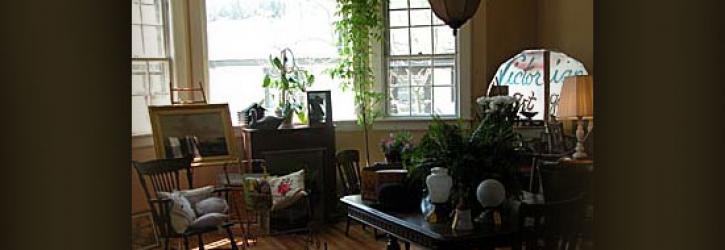ANTIQUE WOOD FURNITURE, WITH THE ORIGINAL FINISH
Avoid extremes of humidity and temperature, which accelerate cracking and checking of finish, and loosen joints and veneer. Do not set beverage glasses, vases of flowers, etc. on surfaces without coaster or mat protection.
Vacuum or dust with a soft cloth. Occasionally use a cloth just barely dampened with solvent-based cleaning wax to wipe the surface to pick up more dust, and immediately wipe with a dry cloth or soft paper towel. Do not use spray waxes and polishes on surfaces as they will leave a higher gloss and some silicone which may make future refinishing more difficult.
Occasionally wax with paste (carnauba) wax. Rub on a very light coat with a soft cloth with the grain of the wood (or put a lump of wax inside a few layers of folded cheesecloth and rub onto wood thus preventing heavy smears); then buff at once with soft cloth, turning often, until wax coating is hard. (Old cotton tee-shirts are good.) Be sure all wax is completely buffed until hard to avoid smears and streaks. Here a small electric polisher is a great "arm-saver" on all smooth surfaces; wipe surface gently with clean soft cloth after applying wax to remove any loosened soil and then let set several minutes (following wax label directions) before power buffing. An occasional re-buffing will renew the soft gloss. Paste wax helps cover small cracks and checks in old finishes, and can easily be removed with solvent when desired.
Antiques that have been refinished should be treated according to type of finish. Since old finishes may be affected by cleaning treatments, always test the first time on any inconspicuous place on furniture to be sure it is compatible with finish. Generally, the above treatments are satisfactory.
PIANO CARE AND CLEANING
Avoid extremes in humidity if possible, as excessive dampness or dryness is damaging. Sudden changes in temperature affect both the tone and the wood. Do not put near a register, radiator or window. Have it tuned regularly.
Follow manufacturer's instructions for cleaning. The lacquer finish on the wood only needs to be dusted with a vacuum cleaner brush, and sometimes wiped with a soft, untreated dusting cloth or paper towel. It may not require waxing. Vacuum the keyboard.
If waxing of wood finish is desired, use a wax or polish to give the desired amount of gloss. Old ivory keys yellow with age which is natural and cannot be changed; clean them with a cloth barely moistened with denatured alcohol as too much moisture loosens the keys; never use soap which stains ivory. Modern keys are made of plastic (usually acrylic) and may be wiped with a damp cloth, followed by a dry cloth. Follow manufacturer's instructions in guide with piano.
For stubborn soil, wipe keys with a cloth wrung out of mild detergent and water solution; wipe with damp cloth; dry with dry cloth.

